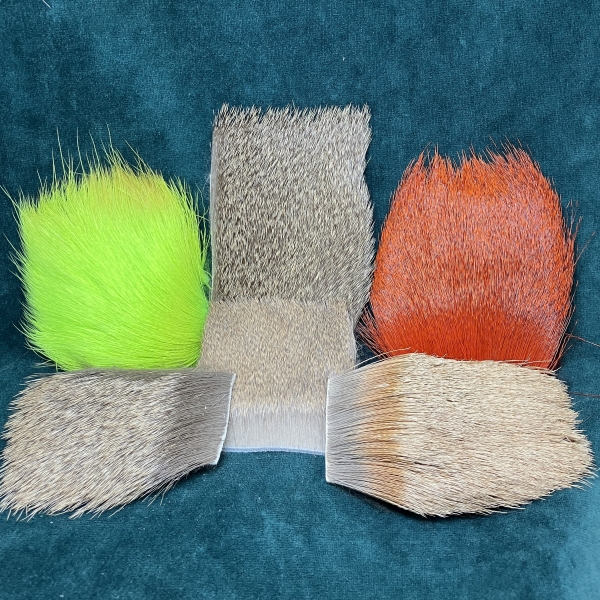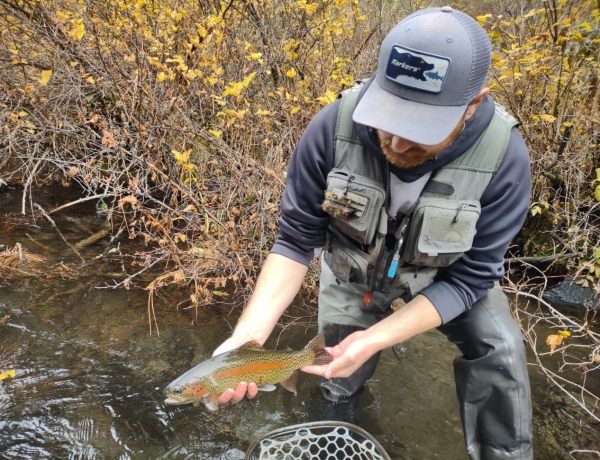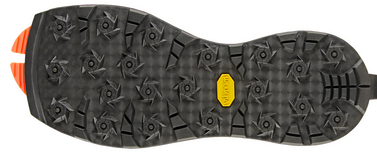Oregon Ducks 42, Colorado Buffaloes 6. Miami Dolphins 70, Denver Broncos 20. The weekend was full of lopsided victories, and the Patient Angler crew vs. the lower Deschutes resident redband population was no exception. The final score was unclear, but certainly the redband (and whitefish) will have to go back to the drawing board if they want to put up more of a fight the next time Josh and Steve are in their waters.
The weather was excellent for fishing, with intermittent showers and high overcast clouds. We walked in past the first few holes to my favorite rock and I began working up the seam, hooking a fish right on the little drop off next to the rock. A very handsome 18" fish came to hand a little while later, with a little blush on the gill plate one can only assume was from embarrassment. The more times a fish gets hooked, the redder it gets with embarrassment, which is why most of the big fish in the lower D have scarlet gill plates and sides (do not fact check this).
We walked down to another favorite spot of mine and got a few more nice redbands near a little island that can sometimes produce well. On the far side of the island, I fished the top while Steve fished the lower section. I quickly tied in to what felt like a large fish. Since it was staying down and not running much, I could only assume that I was connected to that great bronze trickster god of the Deschutes, the venerable whitefish. If carp are the poor man's bonefish, whitefish are bonefish for men that have to check their bank account before going to the Deschutes Pub for a pint of Patient Angler Pale Ale. Clocking in at about 20" I had myself a fine specimen. A 20" whitefish on the lower Deschutes could be around 10 years old, and with a schnoz like this one had she had certainly been around for a while. And just look at that adipose!
Just downstream of the island, there is a nice point that sometimes holds risers. Coming around the tree so that the holding water was in view, a spectacular scene unfolded before us. The fish rose with brash aplomb bordering on hedonism, gluttonously boiling and slashing on emergers, cripples, and spinners like a meteor shower on a clear desert night. Some of that may be hyperbole. BWOs, caddis and midges all were being taken and we got a few on top before they got wise to our game and we had to move on. The dry fly/surface film activity in general was very good from about 11 til 3 or 4, mostly on caddis emergers. We left around 6, but judging by the swarm of swallows above the river, there was a nice caddis hatch in the evening as well. Eggs, stoneflies, caddis, and even crawdads all produced fish subsurface when deployed.
As we move forward on the lower D, chinook and to a lesser extent coho will be in the river spawning, and trout will be paying close attention to these fish's spawning activities. There have been a few steelhead back to Pelton, but most steelhead are still down around Maupin and lower at this juncture though. The cold weather seems to be settling in, so the caddis probably won't be around much longer with the exception of the October caddis. The main hatch from now on will be blue wing olives, and conveniently we have recently written an article about that very hatch!


